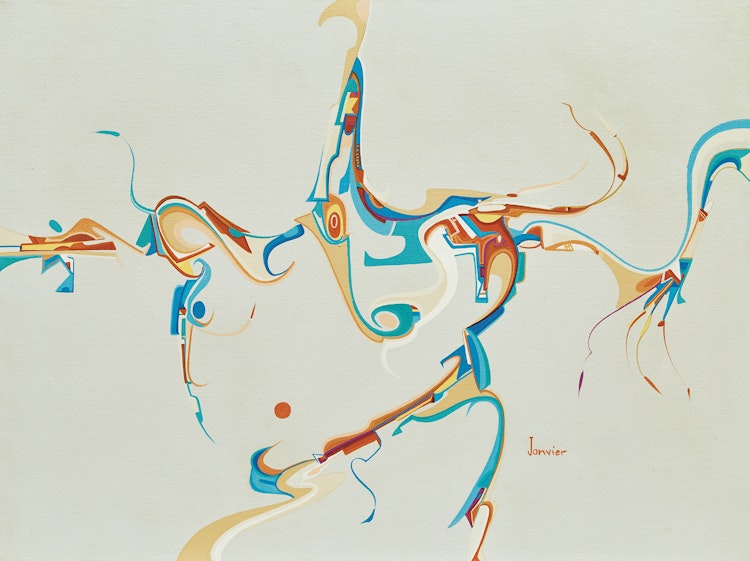Hometown Fans by Alex Simeon Janvier

Alex Janvier
Hometown Fans
acrylic on canvas
signed lower right; titled, dated 1981 and inscribed “CLX-44” on the reverse
18 x 24 ins ( 45.7 x 61 cms )
Auction Estimate: $15,000.00 - $20,000.00
Price Realized $28,800.00
Sale date: June 8th 2023
West End Gallery, Edmonton
Petley Jones Gallery, Vancouver
Private Collection, Toronto
Murray Whyte, ‘Alex Janvier at the McMichael: the art of defiance’, “The Toronto Star” [online], 15 October 2017
Share this item with your friends
Alex Simeon Janvier
(1935 - 2024) RCA, Order of Canada
Born on Le Goff Reserve, Alberta, his talent was discovered by Reverend Father Bernet-Rolande at the Blue Quill Residential School. He later studied at the Southern Alberta College of Art, Calgary, under Illingworth Kerr, Stanford Perrot, Kenneth Sturdy, Ronald Spickett, Marion Nicoll, Robert Oldrich, W. Drohan and Stanford Blogett. Janvier won many awards during his study at the College and received a four year diploma in Fine Art and Craft. Afterwards, he taught art with the Extension Department of the University of Alberta at Edmonton; also at the Edmonton Art Gallery; Edmonton City Recreation Department (two years). His work entitled “Out Lady of Teepee” was chosen to represent Canadian Native Painting in the Vatican in 1950.
Averaging 8- at college, he still could not find anyone who would hire him in his chosen field and even had trouble finding a hotel room in which to stay during his job hunting in the city. Finally, he decided to return to the Reserve and raise cattle with his brother. But in 1964 through the assistance of a friend, he held his first one man show at the Jacox Gallery in Edmonton. Dorothy Bamhouse, “Edmonton Journal” art critis, noted of this show, “The cleanly patterned watercolours do not lean on the cliche symbolism of most Native art. Rather, they achieve a kind of 'nature mysticism” through simplification and near-abstraction of organic forms...colour plays a minor role. Sometimes it is limited to monochrome or earth colours or primaries subdued and steadied with black and brown. Occasionally, brilliant reds, yellows, blues, attain fluorescent proportions, as in 'City Lights'”.
By 1966, Janvier was working for the Department of Indian Affairs, as an arts and craft consultant, travelling throughout Alberta looking for promising talent and generally encouraging Indigenous People with artistic potential and arranging exhibitions of their works.
As a member of the commonly referred to “Indian Group of Seven”, Janvier is one of the significant pioneering Aboriginal artists in Canada, and as such has influenced many generations of aboriginal artists. Janvier was selected to represent Canada in a Canadian/Chinese Cultural Exchange in 1985 and at the Canadian Forum on Cultural Enterprise, in Paris, France, in 2004. He has completed several murals nationally, including “Morning Star” on the dome of the Canadian Museum of Civilization. Alex Janvier recently received three prestigious Lifetime Achievement Awards from the National Aboriginal Achievement Foundation, The Tribal Chiefs Institute, and Cold Lake First Nations. He is represented in a number of public and private collections.
Source: "A Dictionary of Canadian Artists, Volume I: A-F", compiled by Colin S. MacDonald, Canadian Paperbacks Publishing Ltd, Ottawa, 1977

